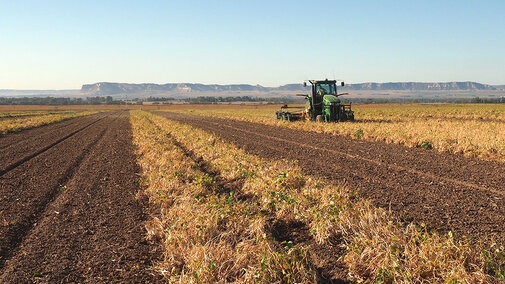For the week ending Sept. 22, 2024, there were 6.7 days suitable for fieldwork, according to the USDA's National Agricultural Statistics Service. Topsoil moisture supplies rated 18% very short, 43% short, 38% adequate and 1% surplus. Subsoil moisture supplies rated 14% very short, 43% short, 42% adequate and 1% surplus.
Field Crops Report:
Corn condition rated 5% very poor, 8% poor, 20% fair, 45% good and 22% excellent. Corn dented was 96%, near 97% last year and 95% for the five-year average. Mature was 66%, equal to last year and ahead of 59% average. Harvested was 10%, near 13% last year and 9% average.
Soybean condition rated 3% very poor, 8% poor, 23% fair, 48% good and 18% excellent. Soybeans dropping leaves was 75%, behind 82% last year and equal to average. Harvested was 10%, near 11% last year and 9% average.
Winter wheat planted was 51%, near 49% last year and ahead of 45% average. Emerged was 14%, near 12% last year and ahead of 7% average.
Sorghum condition rated 0% very poor, 5% poor, 18% fair, 47% good and 30% excellent. Sorghum coloring was 97%, equal to last year and near 95% average. Mature was 38%, near 40% both last year and average. Harvested was 2%, near 5% last year and 4% average.
Dry edible bean condition rated 3% very poor, 7% poor, 27% fair, 42% good and 21% excellent. Dry edible beans dropping leaves was 78%, ahead of 66% last year but near 80% average. Harvested was 46%, ahead of 32% last year and near 45% average.
Pasture and Range Report:
Pasture and range conditions rated 10% very poor, 23% poor, 30% fair, 29% good and 8% excellent.
Data for this news release were provided at the county level by USDA Farm Service Agency, UNL Extension, and other reporters across the state.

